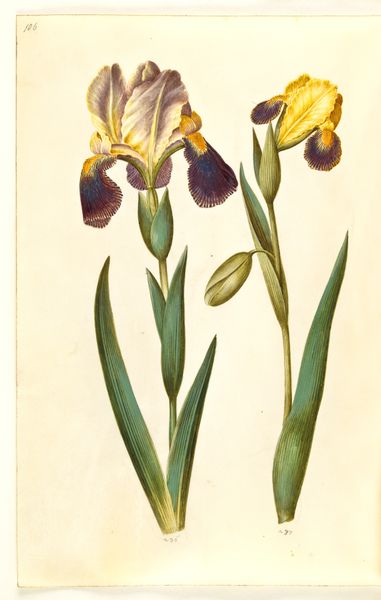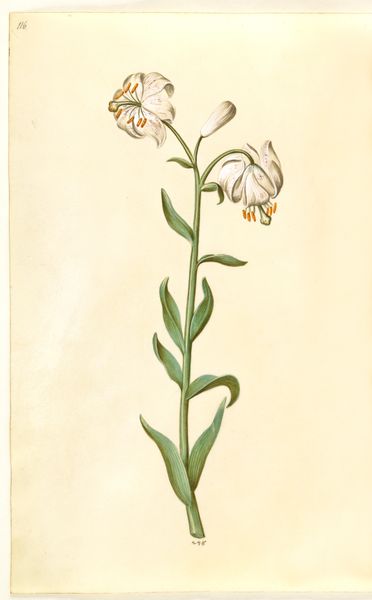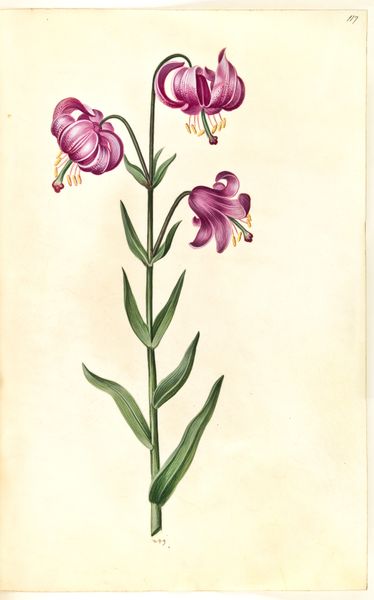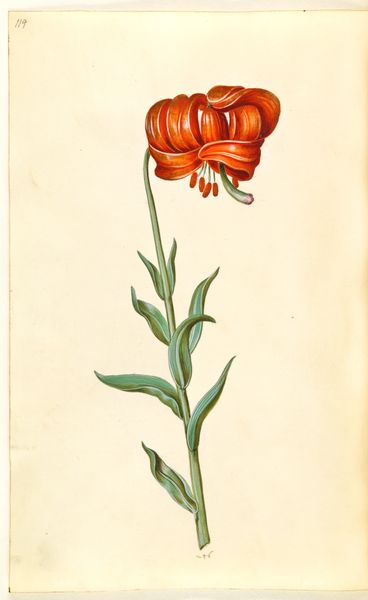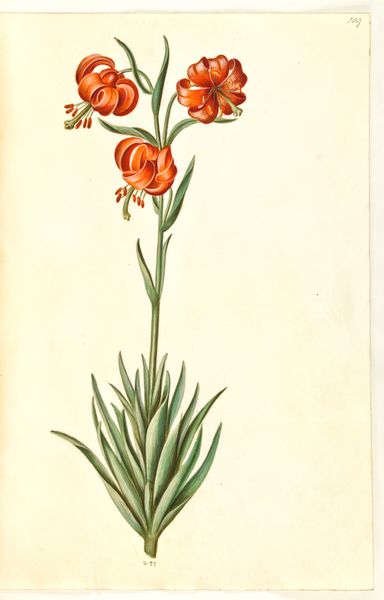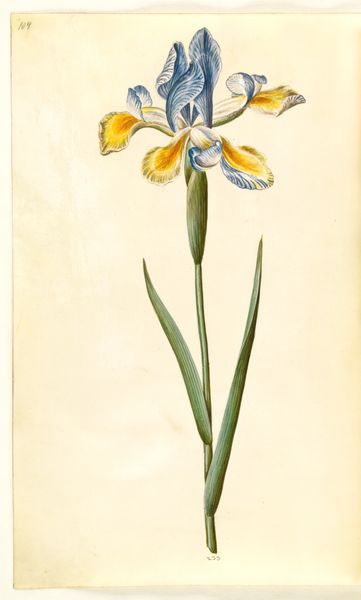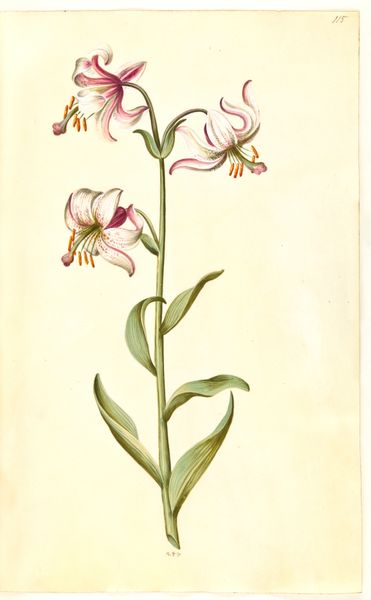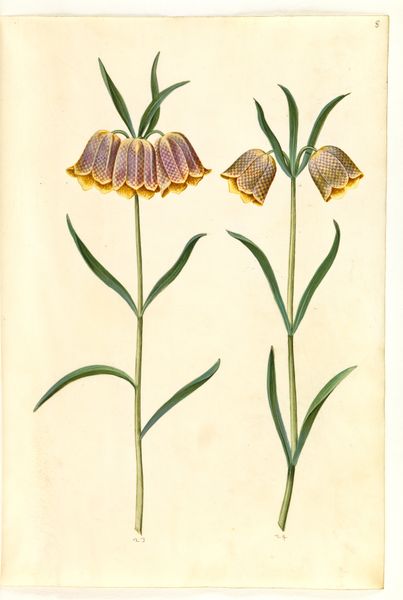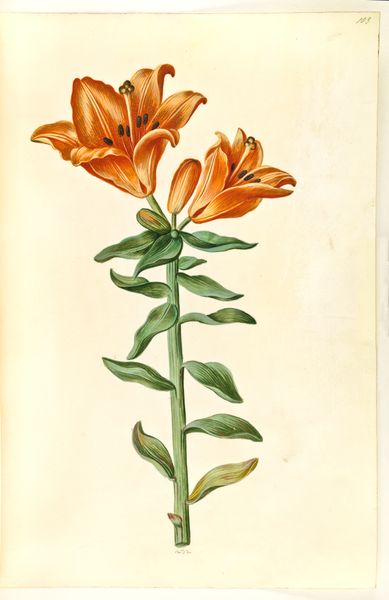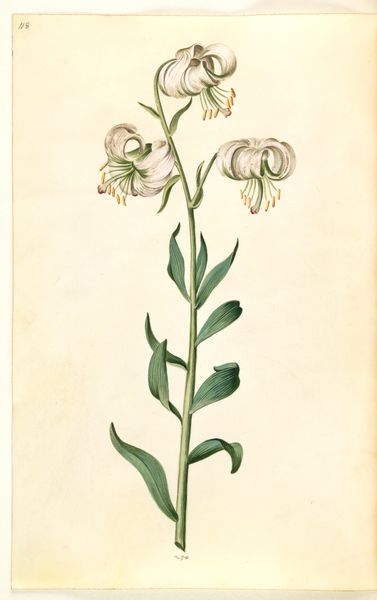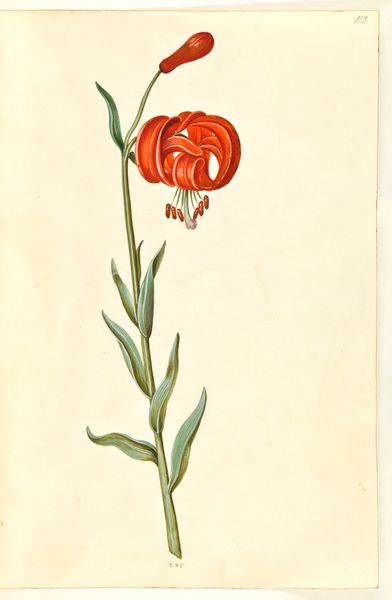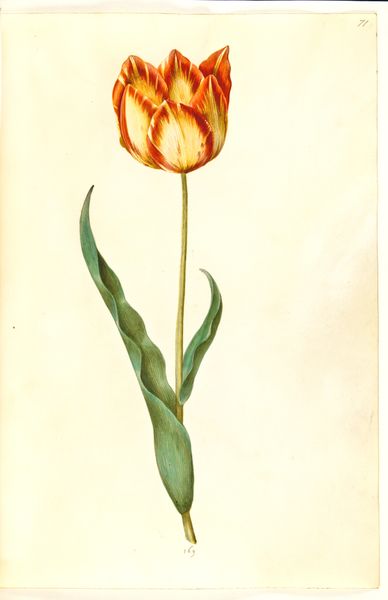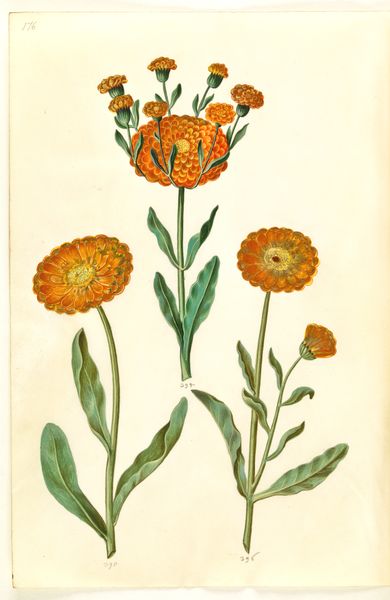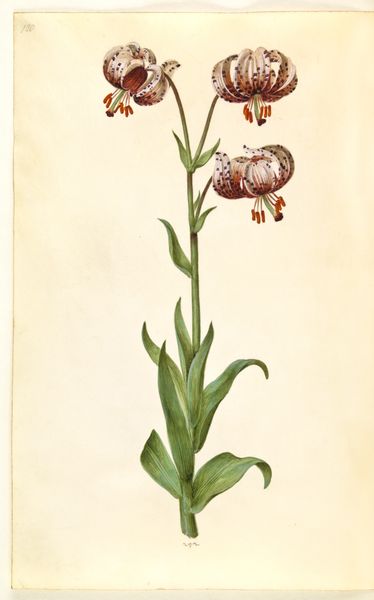
drawing, gouache
#
drawing
#
gouache
#
botanical drawing
#
botanical art
Dimensions: 375 mm (height) x 265 mm (width) x 85 mm (depth) (monteringsmaal), 358 mm (height) x 250 mm (width) (bladmaal)
Hans Simon Holtzbecker made this watercolor of a Lilium pyrenaicum, or Pyrenean lily, in the 17th century. During this period, botanical illustration served a dual purpose, functioning as both art and science. These images, commissioned by wealthy patrons, were kept in cabinets of curiosity, which were status symbols that displayed one's interest in and knowledge of the natural world. Holtzbecker worked in Gottorf, Germany. His detailed, almost photographic, rendering of the lily reflects the growing scientific interest in observation and classification. Yet, it also embodies the aesthetic values of the time, where beauty and accuracy were equally prized. These botanical illustrations contributed to the burgeoning field of natural history, helping to document and share knowledge about plants across Europe. As an art historian, I am fascinated by how institutions like the court at Gottorf shaped artistic production. Researching the patronage networks and scientific communities of the time allows us to understand the broader cultural context in which this delicate watercolor was created. Holtzbecker’s lily is far more than just a pretty picture; it's a window into the social and intellectual world of 17th-century Europe.
Comments
No comments
Be the first to comment and join the conversation on the ultimate creative platform.
